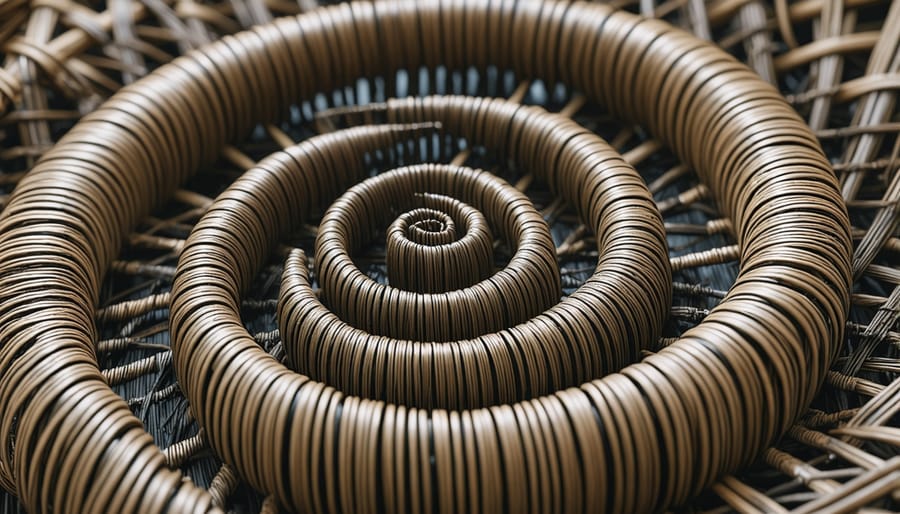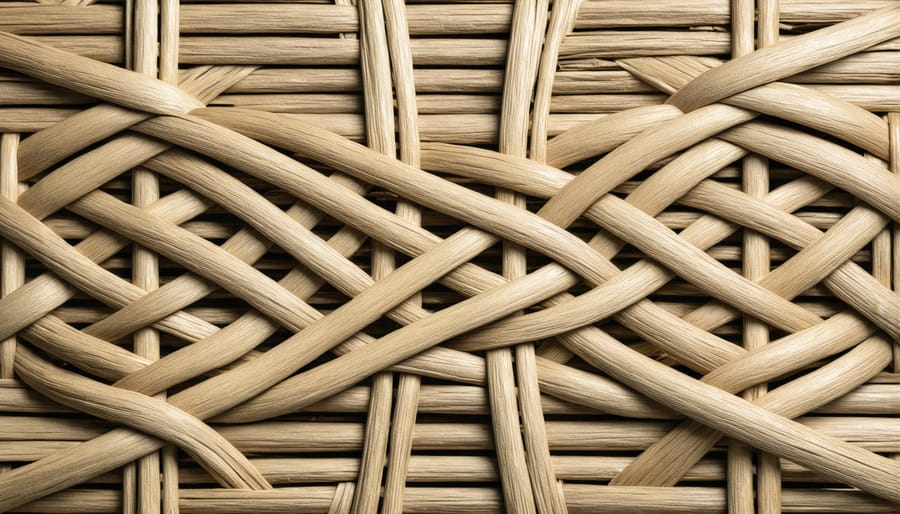Transform your living space with the timeless art of basket weaving through three distinct traditional weaving techniques that have shaped artisanal craftsmanship for centuries. From the intricate coiled method that creates stunning centerpieces to the versatile plaiting technique perfect for modern storage solutions, and the structural stake-and-strand approach that produces durable everyday baskets, these methods offer both practical functionality and artistic expression. Whether you’re a seasoned craftsperson or an aspiring maker, mastering these fundamental techniques opens up endless possibilities for creating custom pieces that seamlessly blend natural materials with contemporary design. Understanding these core methods not only preserves an ancient craft but also allows you to craft personalized storage solutions and decorative elements that add warmth and texture to any modern interior.
The Elegant Coil Weaving Technique

Materials and Tools for Coil Weaving
For coil weaving, you’ll need a core material like raffia, rush, or pine needles to form the foundation of your coils. Modern alternatives include jute rope, cotton cord, or even recycled fabric strips. Essential tools include a sharp pair of scissors, a large-eye needle for stitching, and an awl or thick needle for creating gaps between coils. You’ll also need binding material – traditionally sinew or split reed, but today’s crafters often opt for waxed linen thread or artificial sinew for durability. A spray bottle with water helps keep natural materials pliable while working. Consider having a measuring tape and workspace protection mat handy. For beginners, pre-made kits containing these materials are available and offer a great starting point.
Styling Tips for Coiled Baskets
Coiled baskets bring organic warmth and texture to modern spaces, making them versatile decorative elements. Display these artisanal pieces as striking wall art by creating a gallery-style arrangement, or use larger coiled baskets as eye-catching centerpieces on coffee tables or dining surfaces. In minimalist rooms, place a single oversized coiled basket on the floor as a statement piece or use it to store throws and pillows. The natural fibers and circular patterns work particularly well in bohemian or Scandinavian-inspired interiors. For a contemporary twist, opt for coiled baskets made with non-traditional materials like colored raffia or metallic threads. Mix different sizes and heights to create visual interest, and consider placing small coiled vessels on shelves or mantels as sculptural accents.
Plaiting: The Classic Cross-Weave Method

Modern Materials for Plaited Baskets
Today’s basket weavers have a fantastic array of modern materials at their disposal for plaited baskets. Paper rope offers an eco-friendly option that creates clean, contemporary lines perfect for minimalist decor. Synthetic materials like plastic strips and nylon cords provide durability and weather resistance, making them ideal for outdoor storage baskets. Recycled fabric strips add a sustainable touch while bringing interesting textures and colors to your weaving projects. For those seeking a blend of traditional and modern, waxed cotton cord and leather strips create sophisticated baskets that complement any interior style. Even repurposed materials like magazine pages and plastic bags can be transformed into unique plaited designs, proving that basket weaving continues to evolve with our times.
Decorative Applications
Plaited baskets offer endless possibilities for adding texture and natural charm to your home decor. Display them as wall art by creating a gallery arrangement featuring various sizes and traditional basket patterns. Transform larger baskets into unique pendant lighting fixtures by suspending them over dining areas or in entryways. Use smaller woven pieces as table centerpieces, filling them with seasonal items or leaving them beautifully empty to showcase the weaving technique. Create cozy storage solutions by mounting baskets on walls for books and magazines, or arrange them on open shelving to hold everything from throw blankets to potted plants. The natural fibers and intricate weaves add warmth and artisanal character to any room while serving both practical and aesthetic purposes.
Twining: Creating Intricate Patterns

Choosing Materials for Twined Baskets
For twined baskets, natural fiber materials like reed, raffia, and willow strips work best due to their flexibility and durability. These materials can be used either in their natural state for an organic look or dyed to create striking patterns. Popular color combinations include earthy neutrals like beige and brown, or contemporary pairings of black and white for modern spaces. When selecting materials, ensure they’re pliable enough to twist and bend without breaking. For beginners, start with reed or raffia, as they’re more forgiving and easier to manipulate. Consider mixing materials of different textures or thicknesses to add visual interest to your basket design.
Incorporating Twined Baskets in Modern Spaces
Twined baskets bring a touch of artisanal charm to modern spaces while maintaining their practical functionality. Display these handcrafted pieces as wall art by creating an eye-catching arrangement of different sizes and patterns. In minimalist rooms, a large twined basket can serve as a striking centerpiece on a coffee table or console. Consider using neutral-colored twined baskets as stylish storage solutions in home offices or bathrooms – they’re perfect for holding magazines, towels, or blankets. For a contemporary twist, mix twined baskets with metallic accents or place them alongside geometric furniture pieces. You can also create depth by grouping baskets of varying heights on open shelving or using them as unique pendant lamp covers for a bohemian-modern vibe.
The art of basket weaving brings together three timeless techniques – coiling, plaiting, and twining – each offering unique possibilities for creating beautiful, functional pieces. Whether you choose the sturdy spiral patterns of coiled baskets, the clean lines of plaited designs, or the intricate textures of twined vessels, these traditional methods can produce stunning results that complement any interior style. Consider adding handwoven baskets to your space as decorative storage solutions, wall art, or striking centerpieces. Their natural materials and organic shapes add warmth and character to modern homes while celebrating ancient craftsmanship. With practice and patience, you can master these techniques to create personalized pieces that tell your story and enhance your living space. Start with simple projects and gradually work your way up to more complex designs – you’ll be amazed at what you can create with your own hands.
